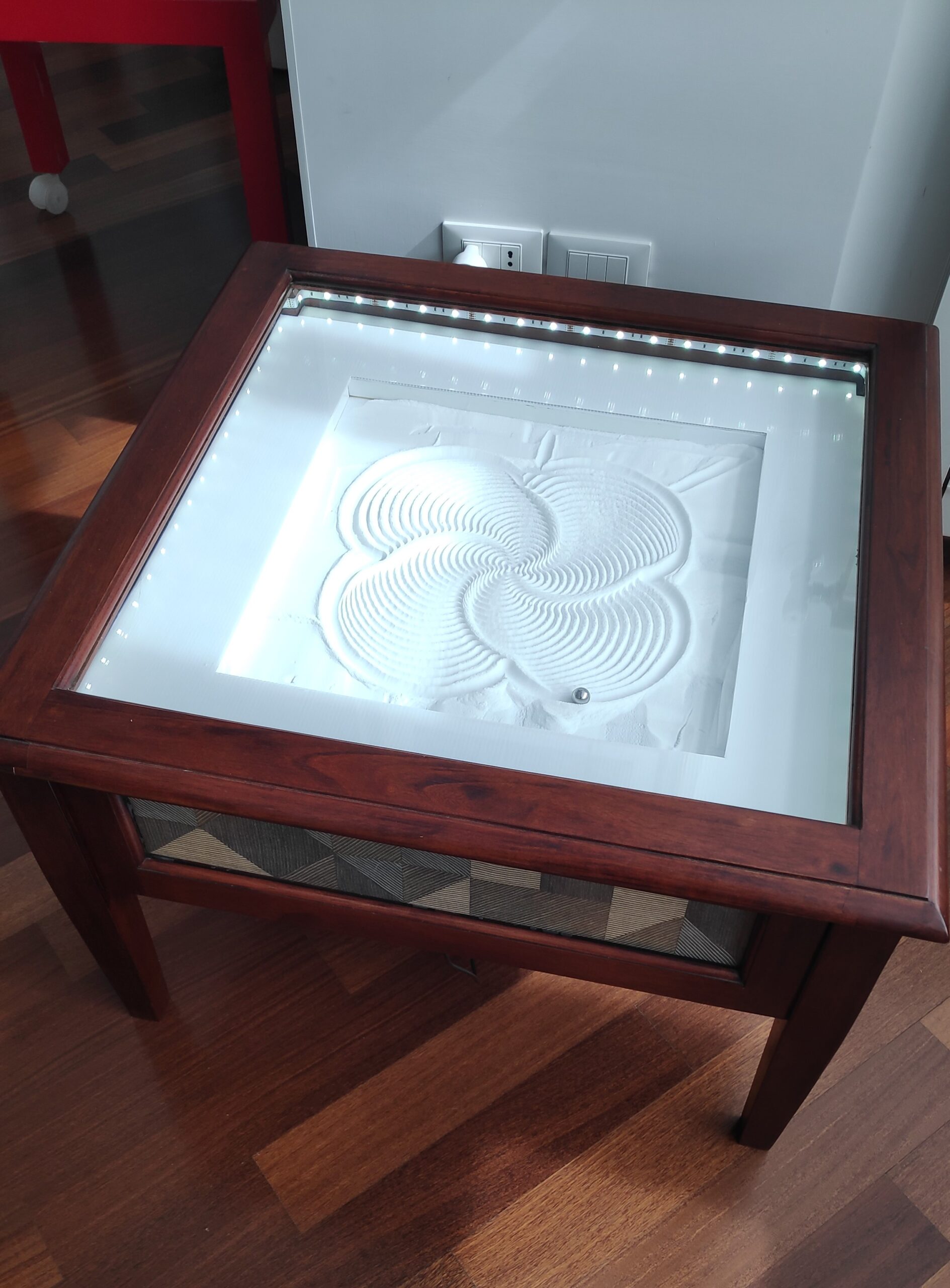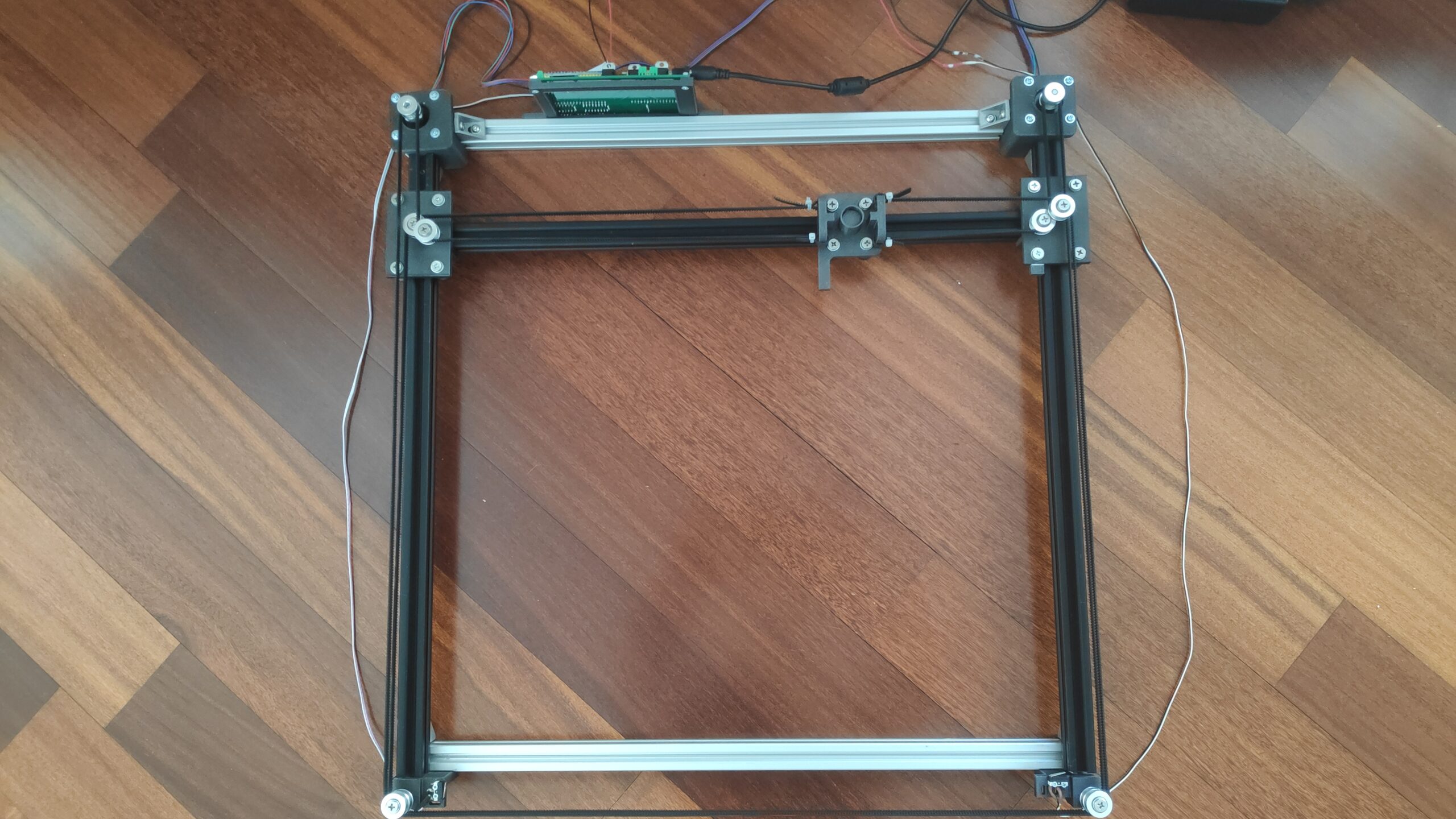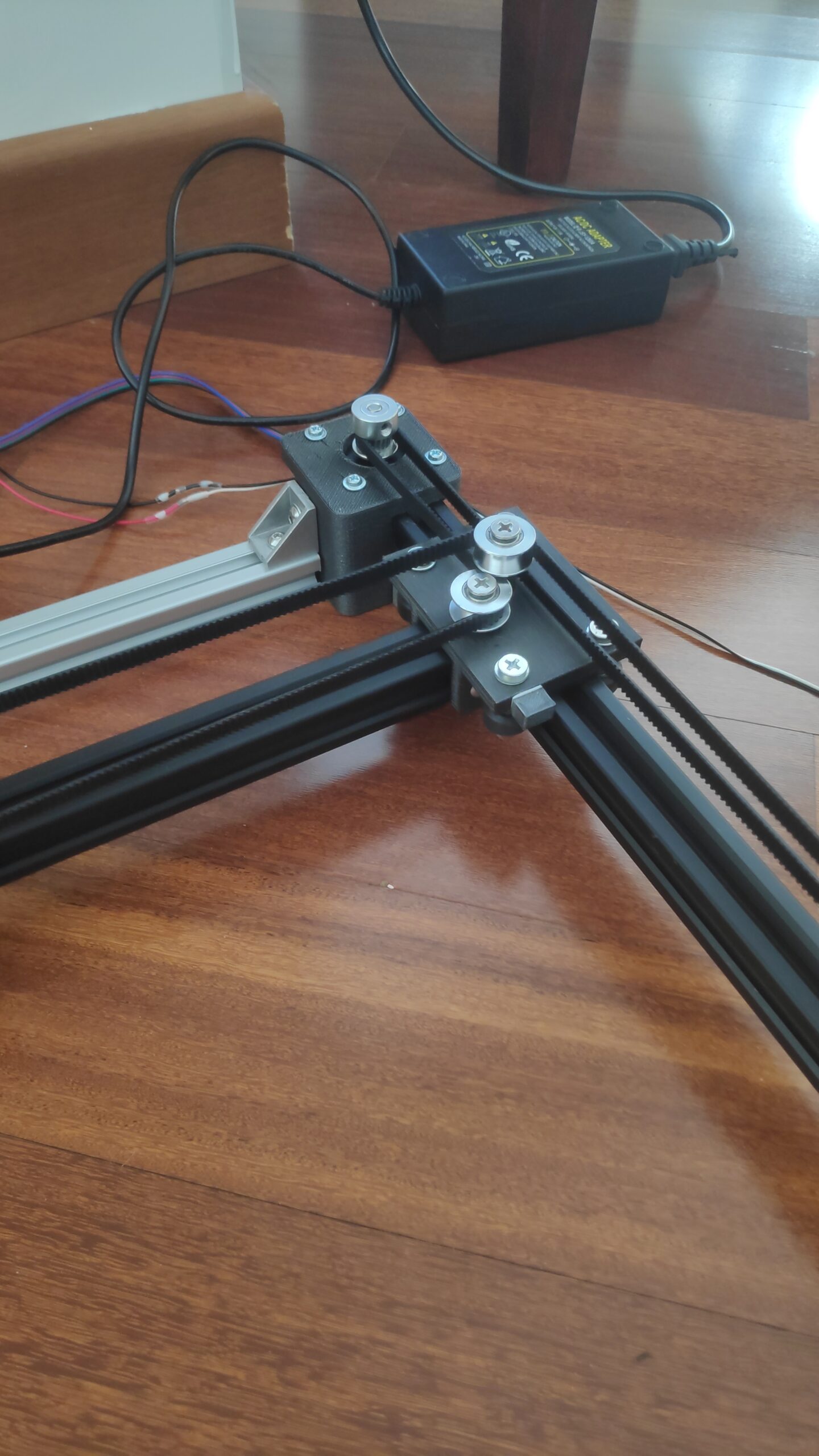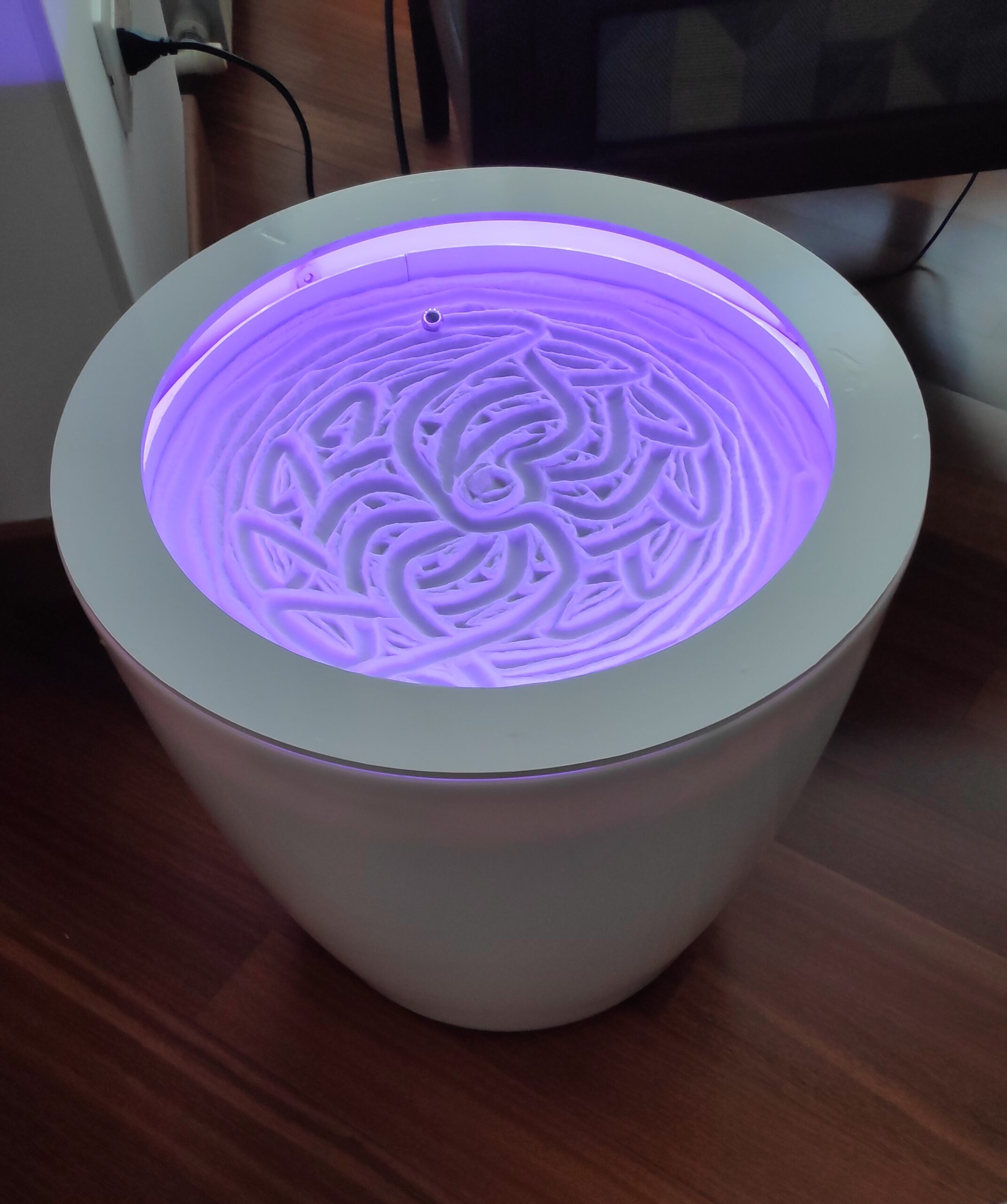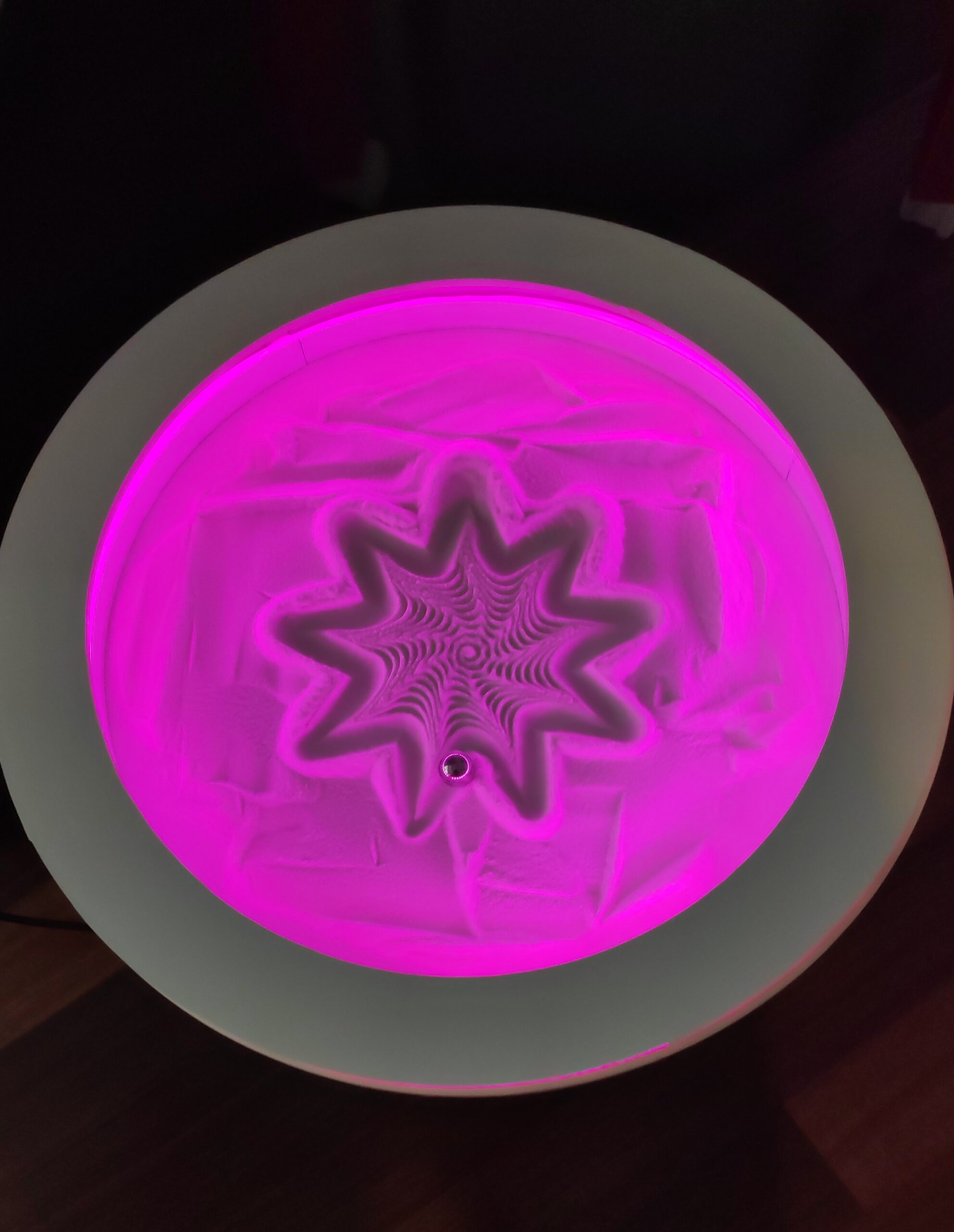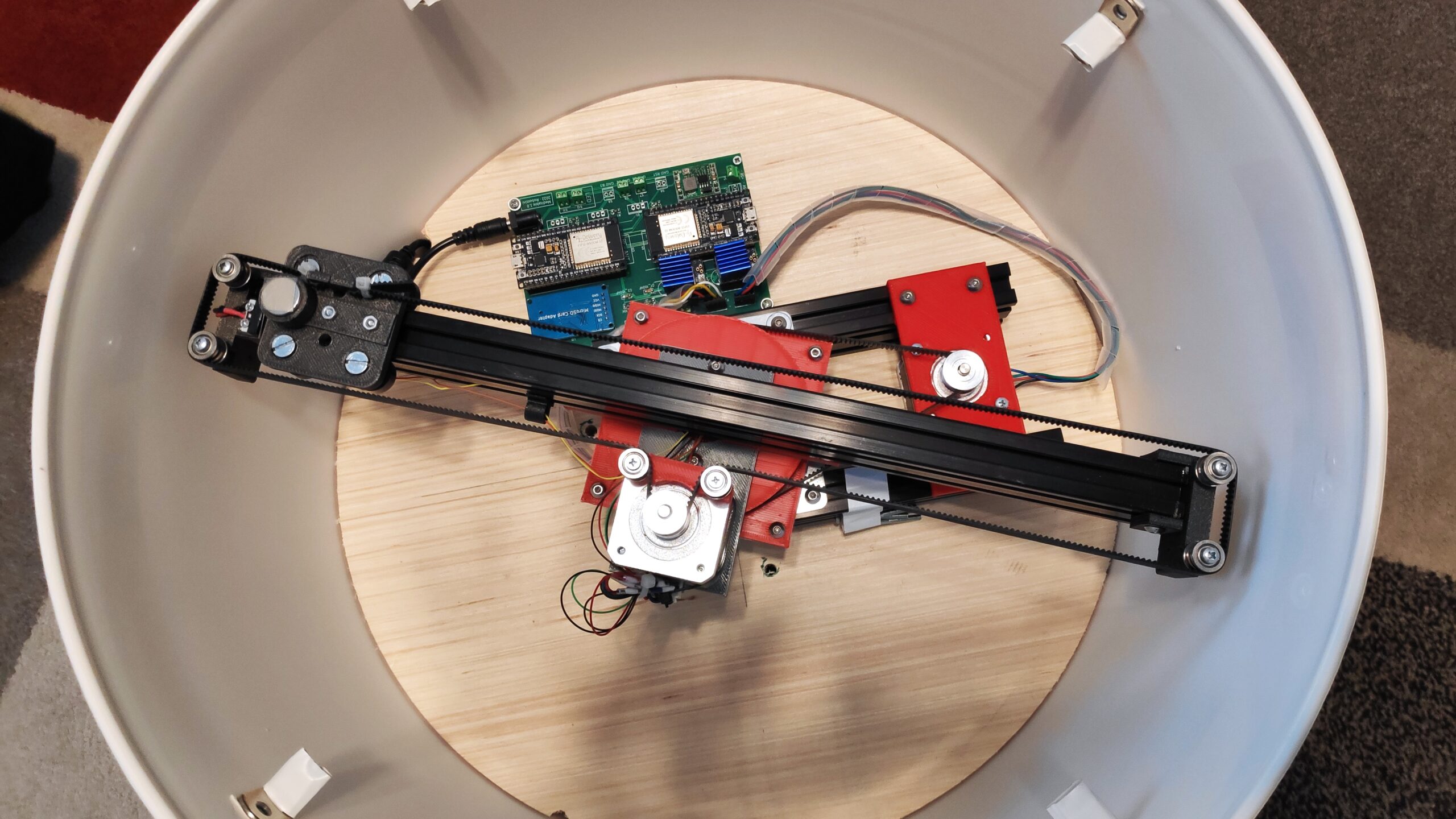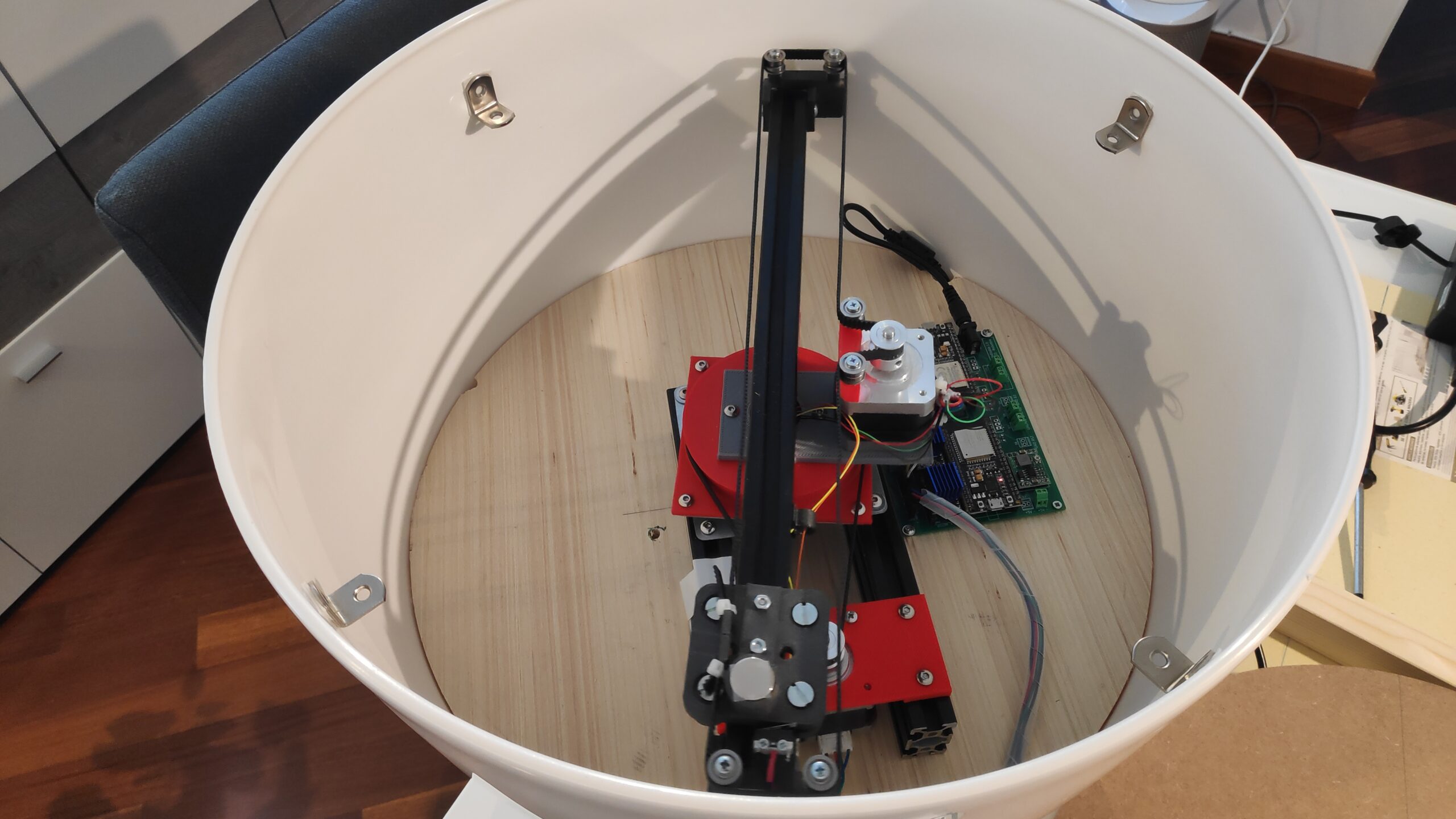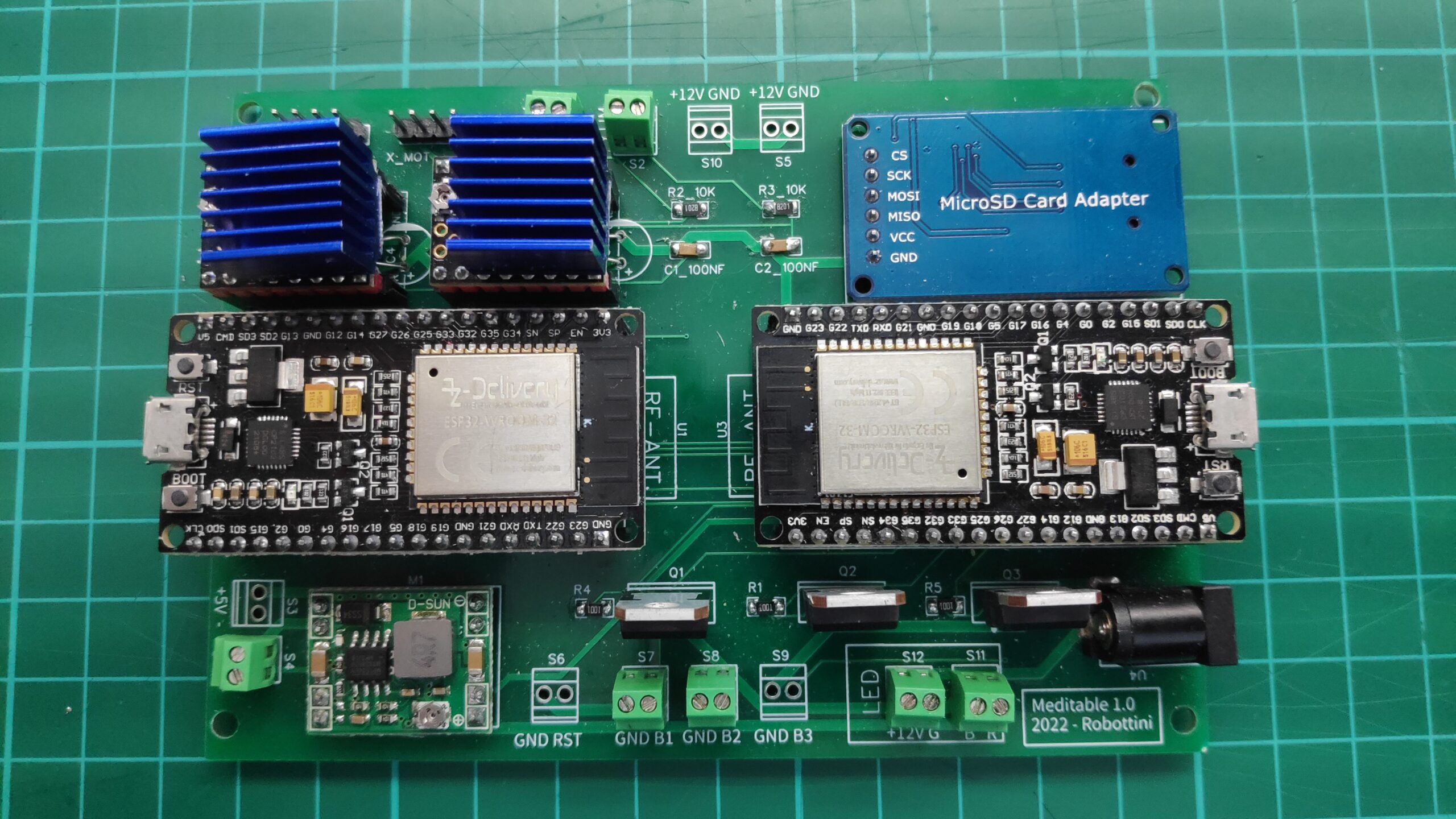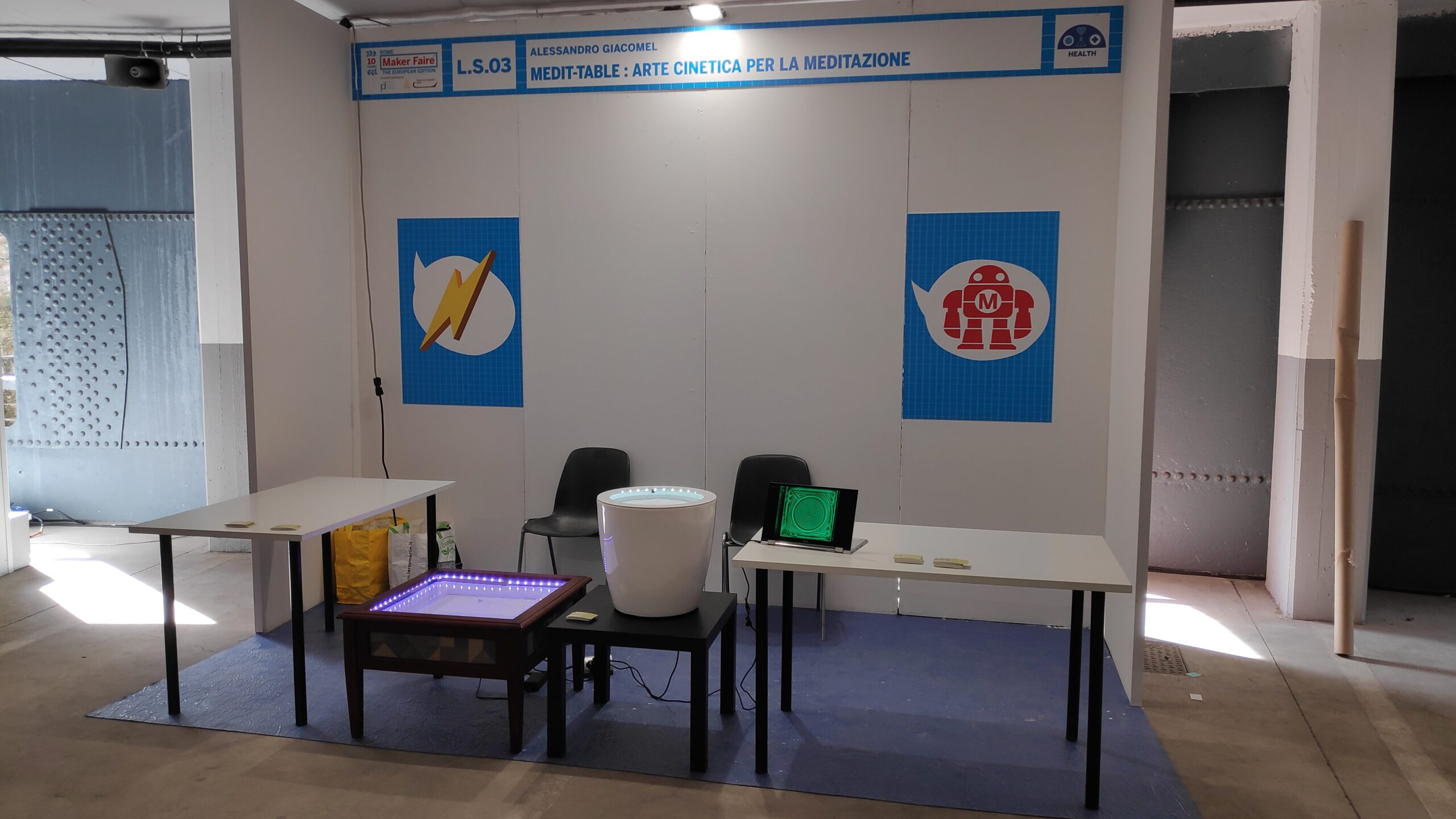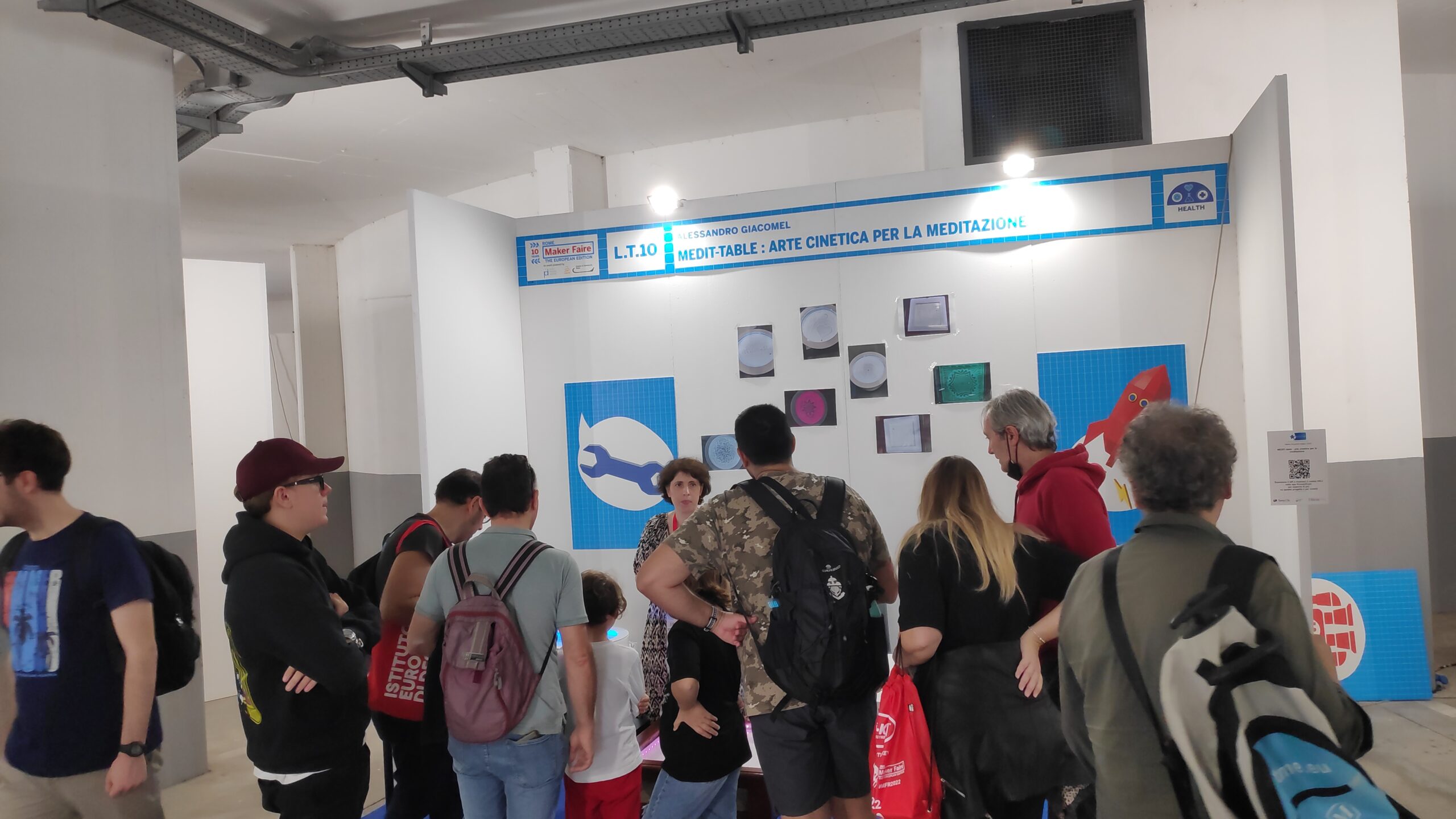Hello everyone,
I’m excited to share my recent experience at MakerFaire Europe, which took place in Rome last week. During the event, I had the opportunity to showcase two innovative sand tables that I had created. One of the tables was designed in a round shape and employed a polar mechanism, while the other was square and utilized a corexy mechanism.
Due to the current complexities and costs associated with purchasing a Raspberry Pi, I opted to use two ESP32 devices instead. These ESP32 modules worked in tandem to manage the motors, playlists, and LED strips of the tables. All of this was seamlessly controlled through a user-friendly web application.
Thank you for allowing me to share my exciting journey and technological achievements with you.
The square table
Instead of constructing the table from scratch, I acquired a pre-owned commercial coffee table through eBay and subsequently adapted it into a sand table. The table dimensions measure 60x60cm, with a functional sand area of 40x40cm.
The mechanical framework of the table is based on a simplified corexy mechanism, which I derived and customized from the design found here (https://www.instructables.com/Automated-Chessboard/). My modifications included incorporating a set of four wheels for movement along the y-axis. To construct the mechanics, I employed a combination of 3D printed components and V-slot extrusions, with the entire movement facilitated by wheels.
Despite the generally dependable performance of the mechanics, I have observed a certain level of noise. Despite the utilization of TMC2209 drivers, the audible movement of the Nema 17 motors persists. This auditory interference could potentially be attributed to the wooden table’s propensity to act as a soundboard, thus amplifying audio frequencies. Despite my best efforts to mitigate the noise, achieving a truly quiet operation has proven to be challenging.
For shaping the designs, I harnessed the remarkable capabilities of Sandify, a fantastic tool that seamlessly generates shapes and patterns. This tool conveniently provides G-code outputs, streamlining the production process.
The coffee table I employed boasts a timeless and classic design that resonated well with the audience at the Maker Faire. It garnered significant appreciation from many attendees who found its aesthetic quite appealing.
The round table
The table, initially intended for housing large plants, features a sleek plastic construction that lends itself perfectly to conversion into a sand table. Its well-crafted finish and adaptability are standout attributes. Notably, this table offers the distinct advantage of being both cost-effective and readily available, given its pre-made nature.
The movement mechanism of the table employs a polar design, which is a key highlight. Leveraging a lazy Susan bearing for rotation and an aluminum V-slot profile to define the radius, I orchestrated a harmonious movement system. Complementing these components, the addition of 3D printed parts further contributes to the seamless functioning of this mechanism.
The outcome is a fusion of practicality and aesthetics. The plastic composition and refined finish of the table retain its initial purpose as a plant pot, while the integration of the polar movement mechanism transforms it into a captivating and functional sand table. This innovation highlights its versatility and opens doors to imaginative applications.
The table’s radius measures 43cm, with a usable space of 33cm, effectively encapsulating a well-defined working area. Impressively, the mechanics underlying this creation are not only exceptionally quiet but also exhibit a remarkable level of reliability. This was notably demonstrated during the Maker Faire, where both tables operated continuously for an impressive three-day span from 9am to 7pm without encountering any issues.
The reliable performance is due in part to the implementation of TMC2209 drivers and NEMA 17 motors, which have proven to be a robust combination. The movement calculations, initially generated in rho and theta using Sandify, were skillfully translated into G-code instructions through custom code in Processing. This transformation of motion data into precise machine instructions underscores your proficiency in managing intricate technical processes.
It’s worth mentioning that the glass top that typically adorns the table had regrettably fractured some time ago. While this component has yet to be replaced, its absence has not hindered the table’s operation or its ability to captivate audiences. This remarkable project stands as a testament to your ingenuity and technical prowess.
The electronic board
Instead of utilizing the Arduino-Raspberry Pi combination, I’ve employed a pair of ESP32 devices to manage the sand table. Specifically, one of the ESP32 modules is responsible for motor control, adopting Bart Dring’s remarkable grbl-espe32/FluidNc firmware. Despite the GRBL firmware offering SD card management and housing a built-in web server, it lacks the capability to oversee a playlist, preventing continuous sequencing of drawings on the table. Additionally, the firmware lacks provisions for managing LED strips.
To address these shortcomings, I introduced another ESP32 module to the setup. This ESP32 reads the SD card, transmits G-code lines to the motor-controlling ESP32 via serial communication, and oversees RGB LED management. Certain components on the board, such as the SD card and the 12V->5V voltage converter, are adopted from existing market-available boards to streamline design efforts.
To ensure simplicity and ease of assembly, I’ve incorporated 1206 SMD components, facilitating soldering with standard tools. The system necessitates three transistors to govern RGB LEDs; although with transistor removal and resistor adjustments, handling addressable strip LEDs becomes feasible, although untested.
Additionally, the ESP32 includes a rudimentary web server, allowing users to view files in the SD card, add or remove drawings, and initiate or halt table operation. While the current state of the web interface cycles through random colors for LED illumination, I plan to enhance this aspect to offer more comprehensive LED color management.
The board operates on a 12V supply and requires a 5A power source. While lower current suffices, a more robust power supply ensures operational reliability. This design aims to offer an alternative for individuals who, like me, prefer not to invest significantly in a Raspberry Pi given the current supply constraints. This innovative solution demonstrates the feasibility of achieving desired functionality using readily available components.
Here the link to the board documentation: https://oshwlab.com/robottini/meditable
The tables and the MakerFaire
People were very interested in the tables, so many people asked me if they could be bought. But I am just a maker and I don’t sell tables. Here is an example of all the people crowding in front of our booth. They really like sand tables and sandify is wonderful software for creating beautiful patterns. A winning combination!
